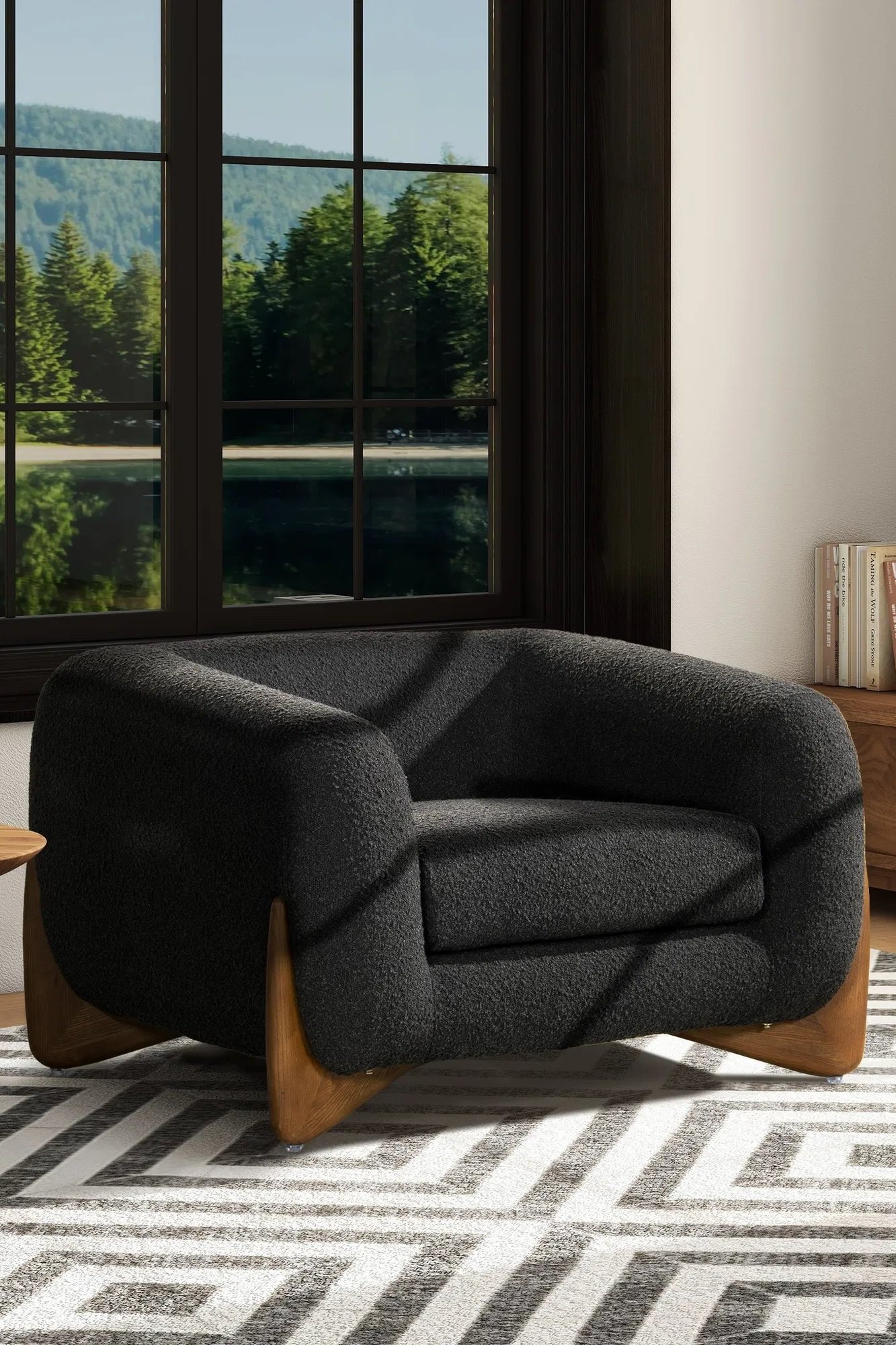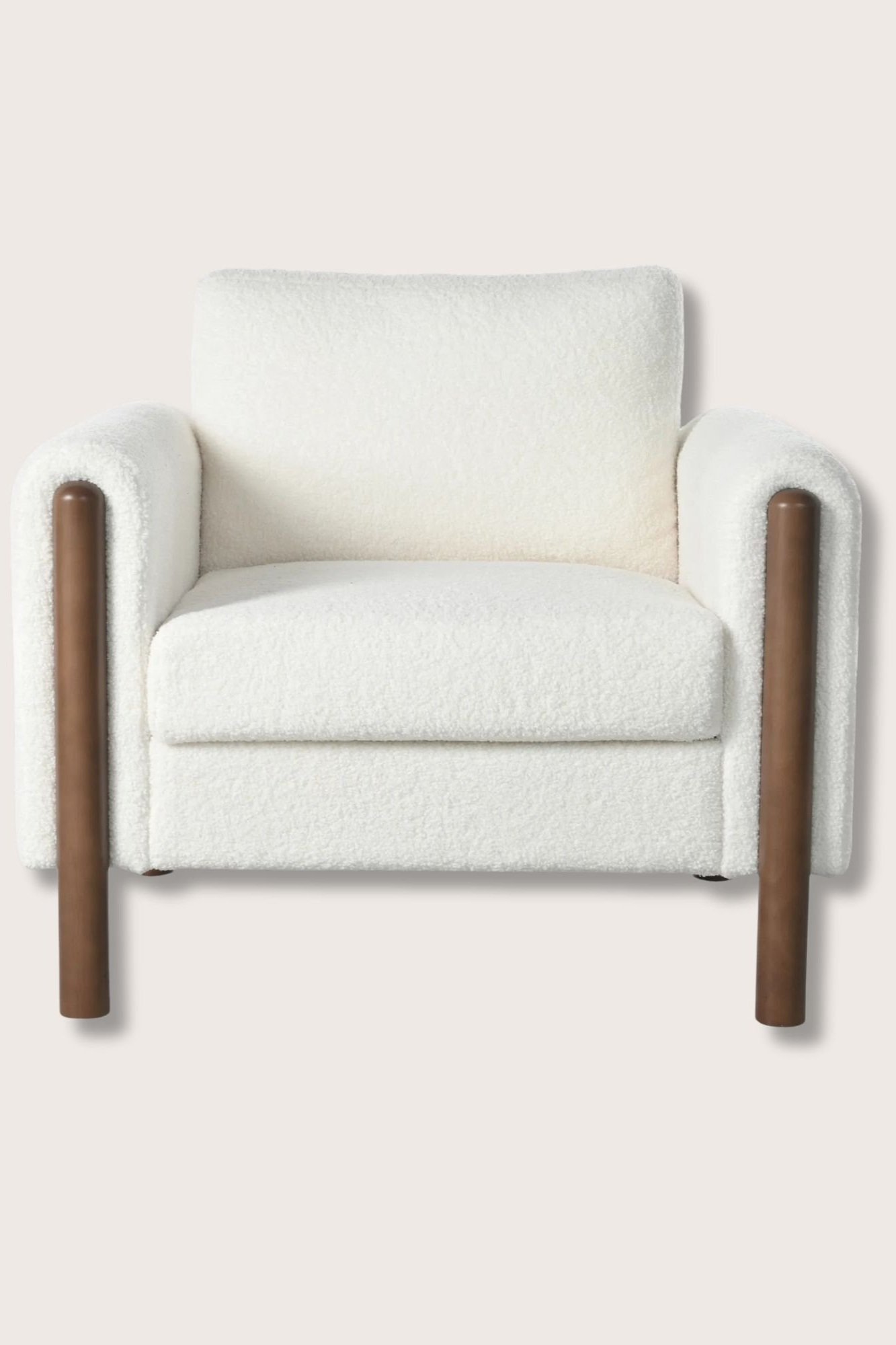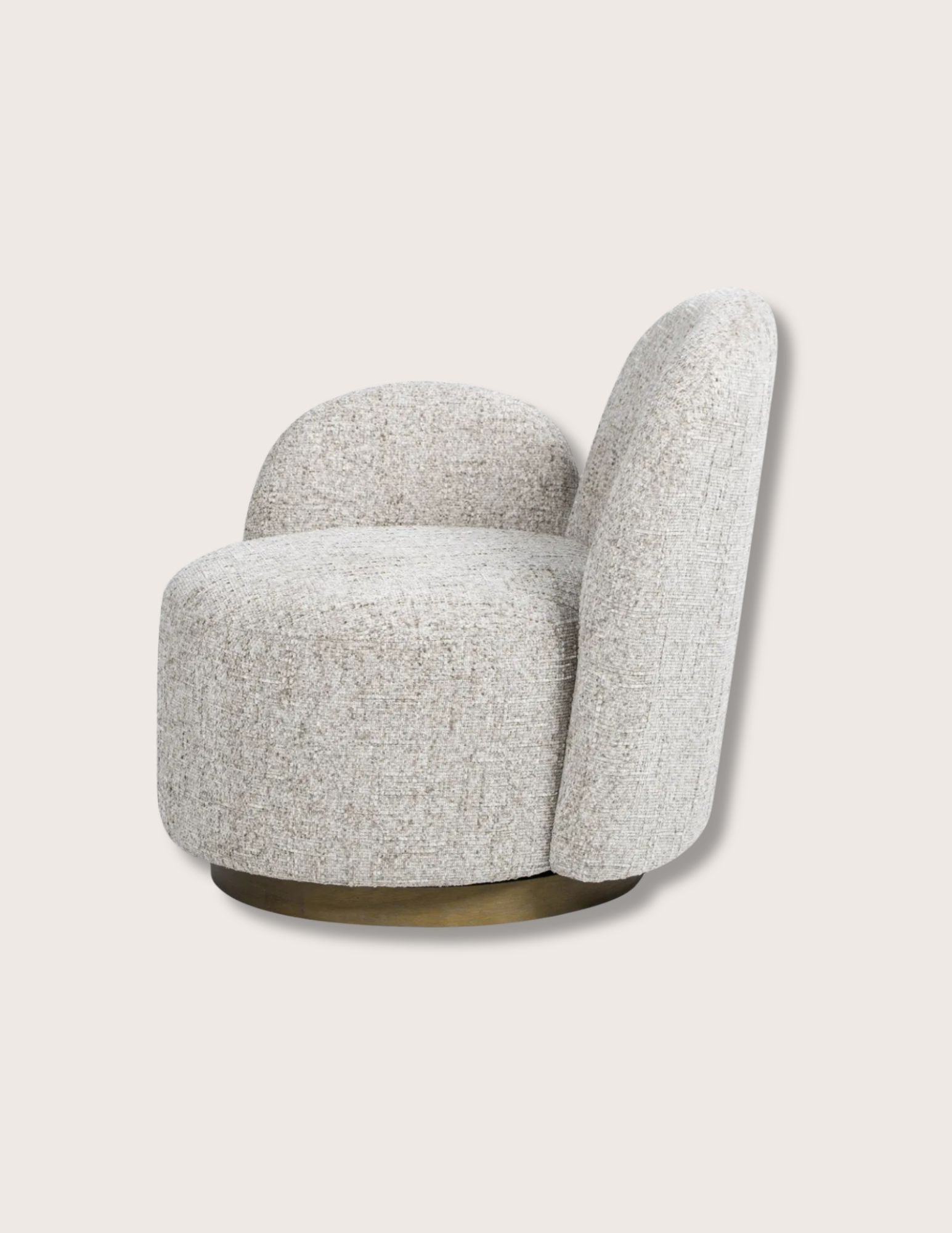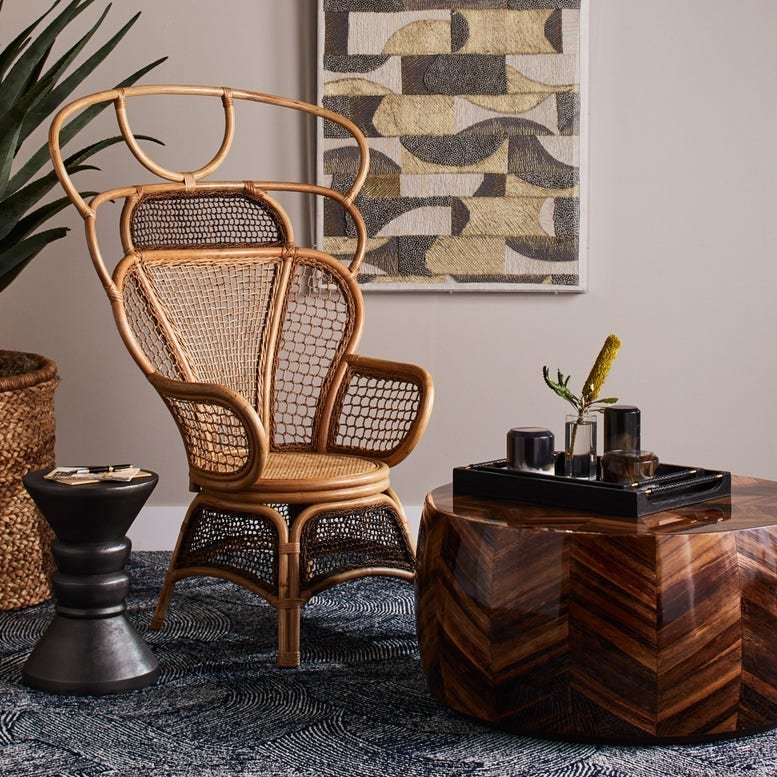 Image 1 of 8
Image 1 of 8

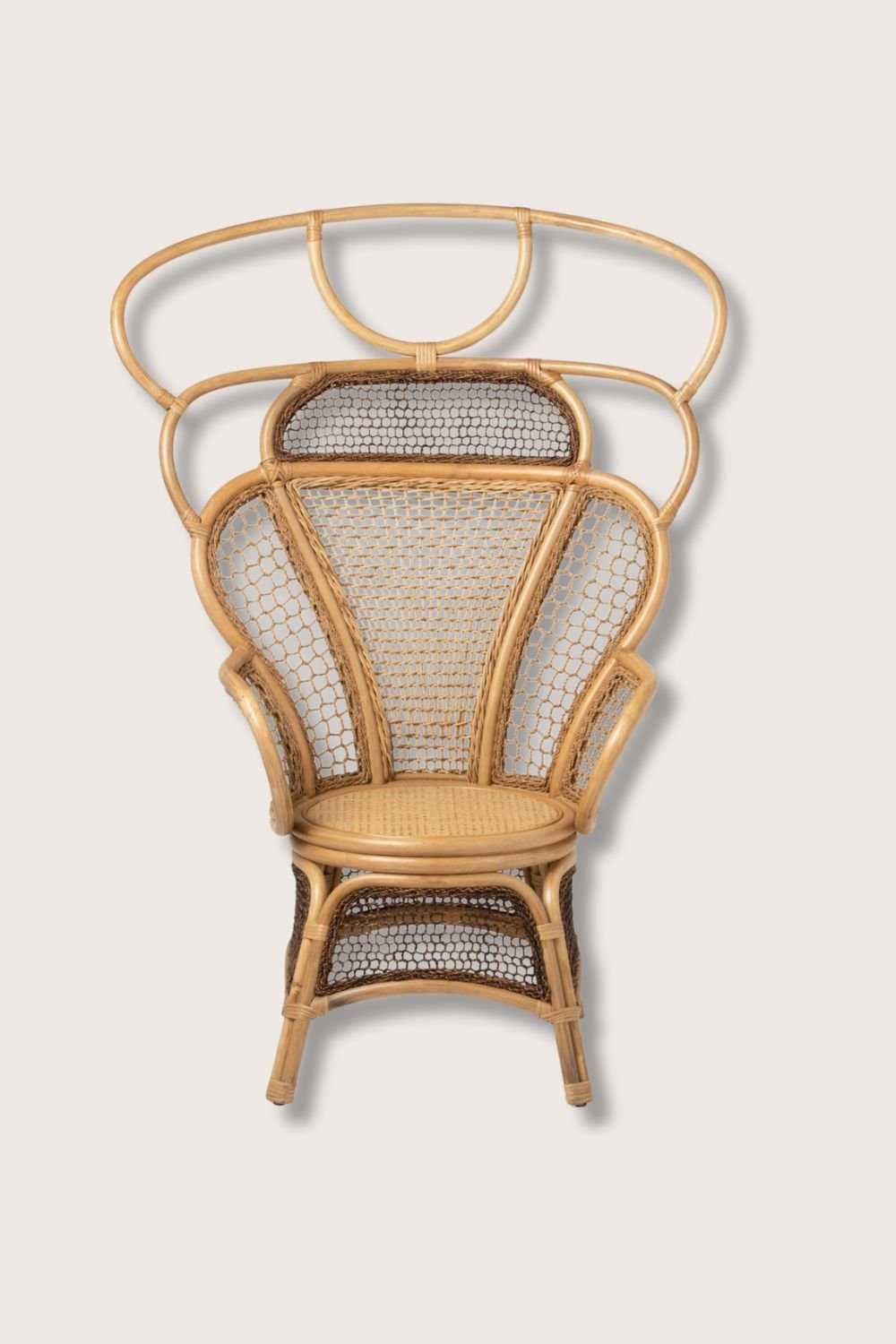 Image 2 of 8
Image 2 of 8

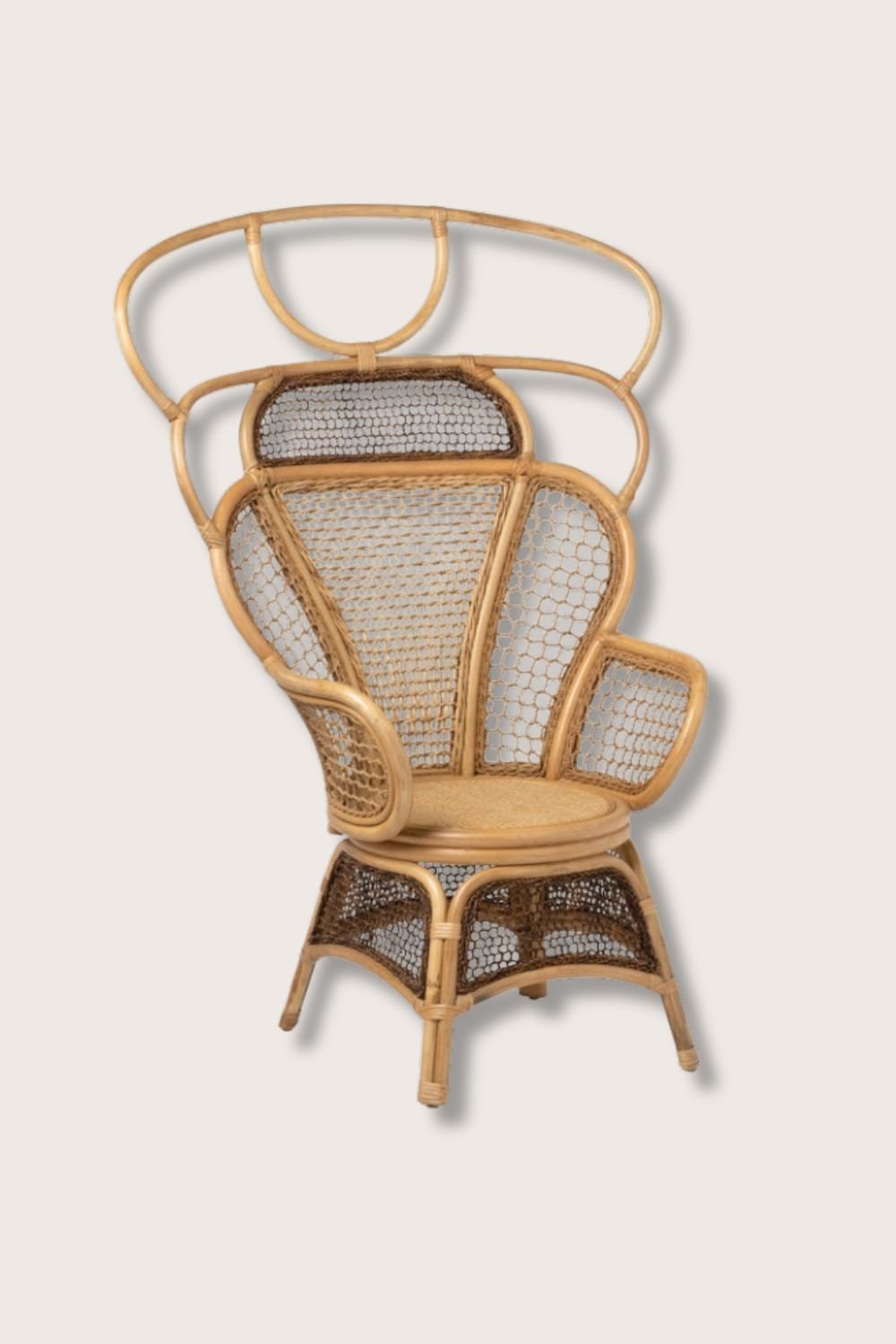 Image 3 of 8
Image 3 of 8

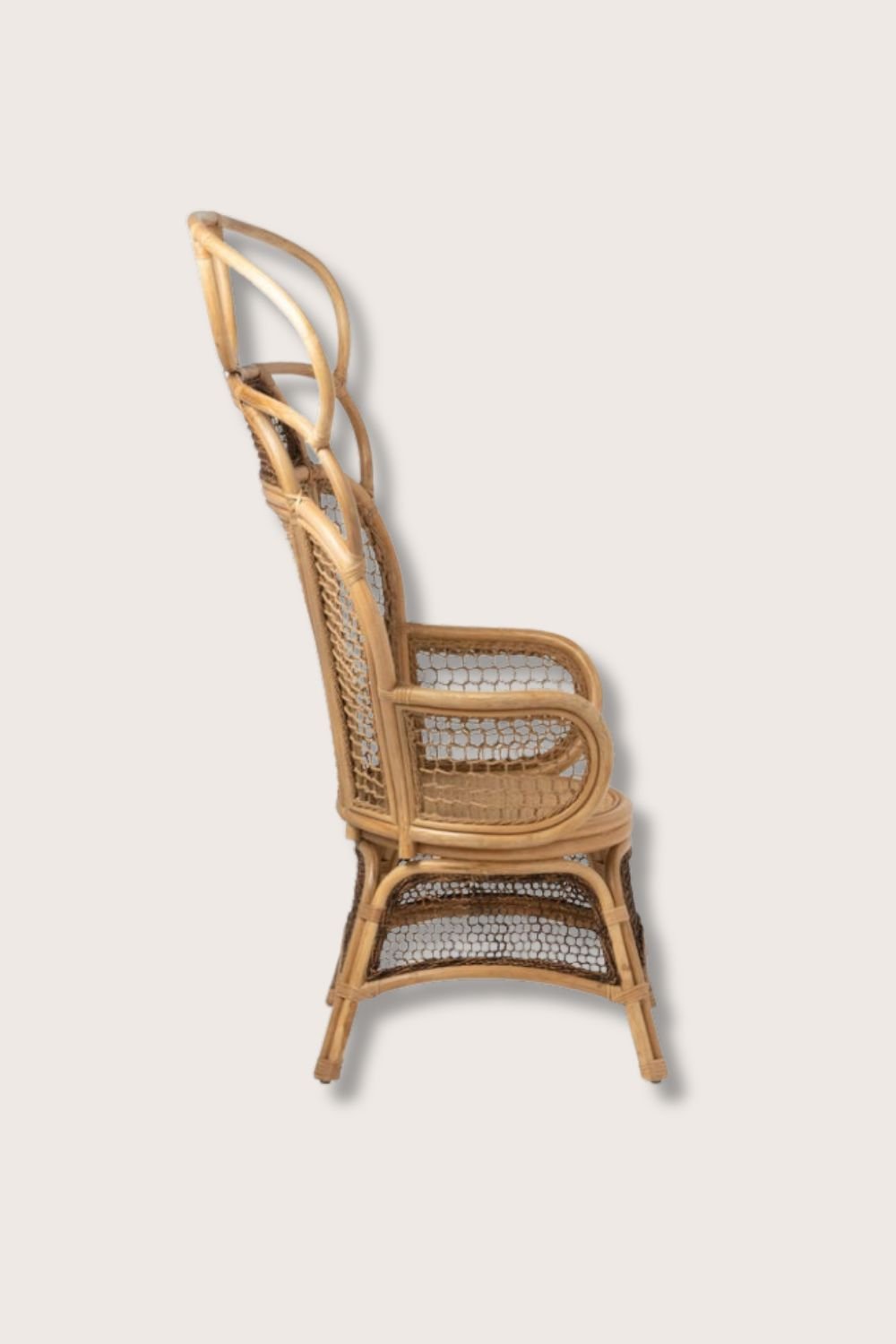 Image 4 of 8
Image 4 of 8

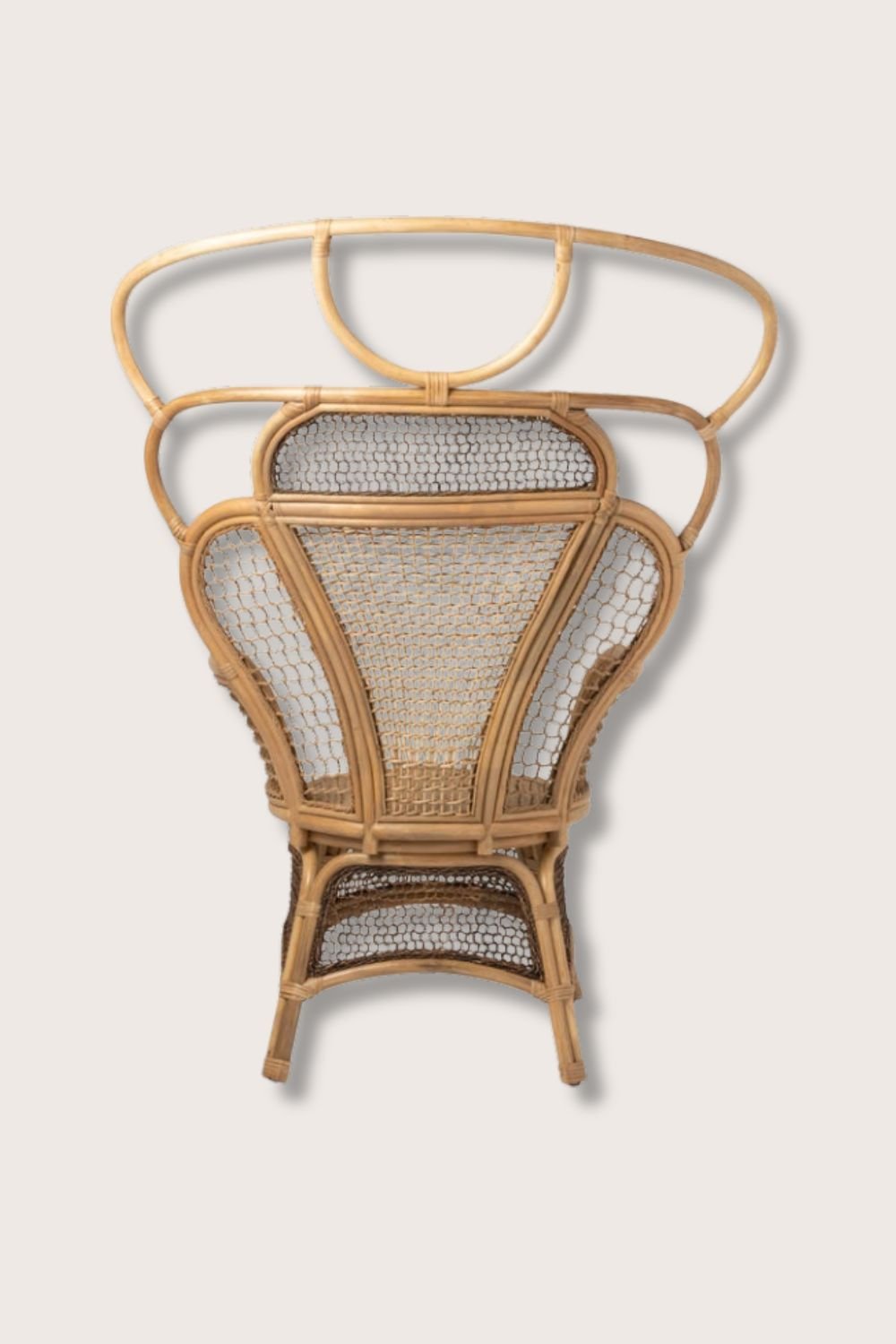 Image 5 of 8
Image 5 of 8

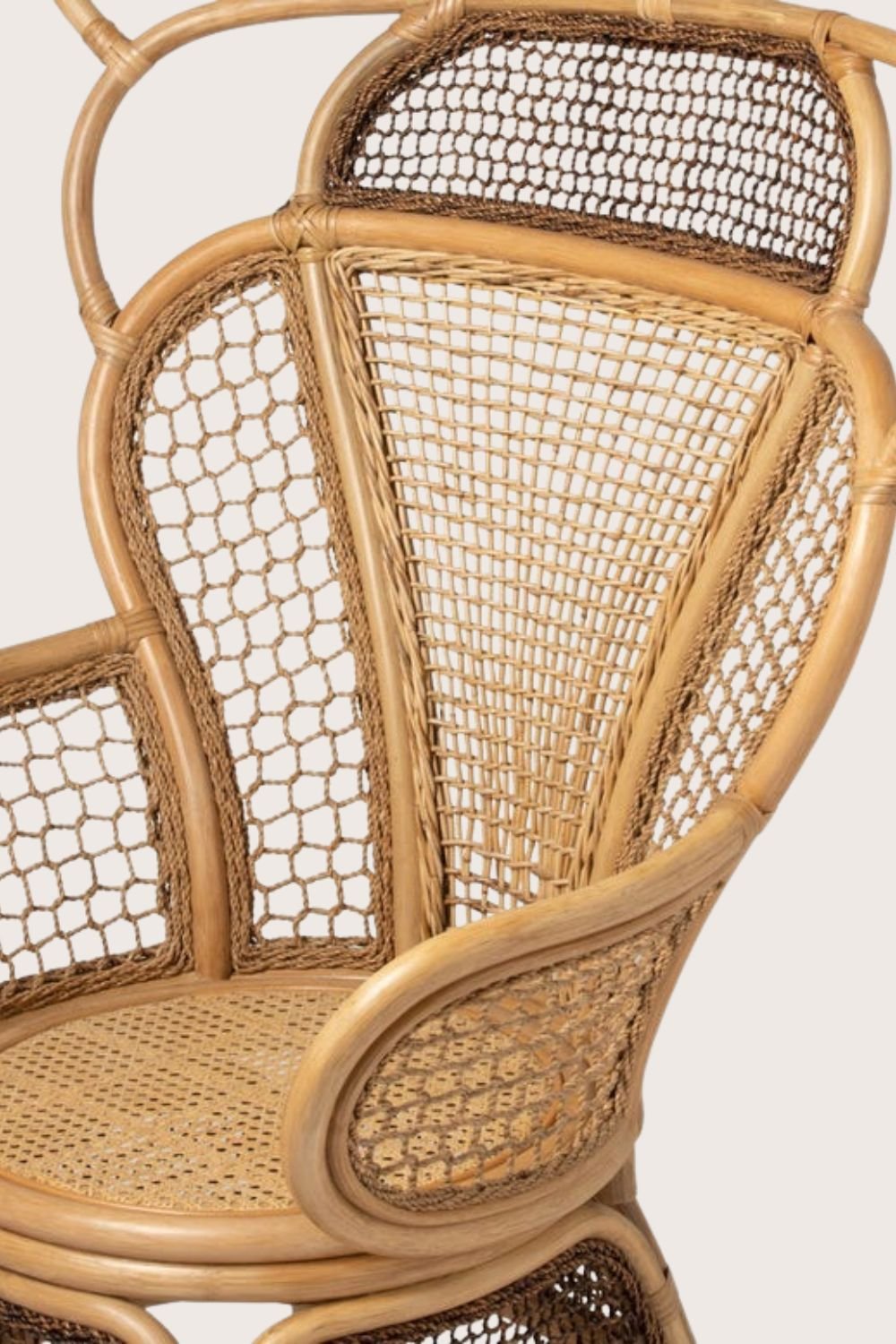 Image 6 of 8
Image 6 of 8

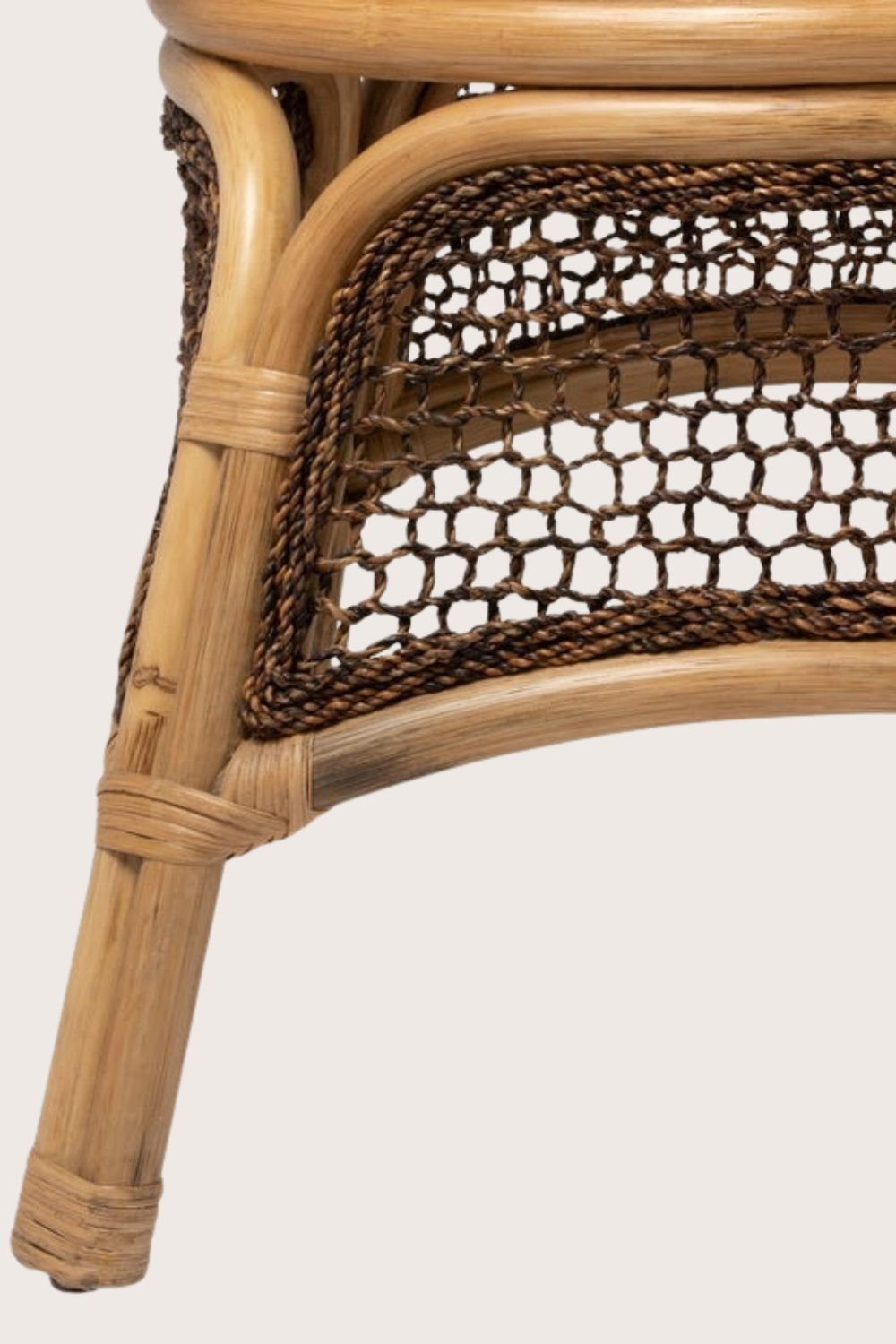 Image 7 of 8
Image 7 of 8

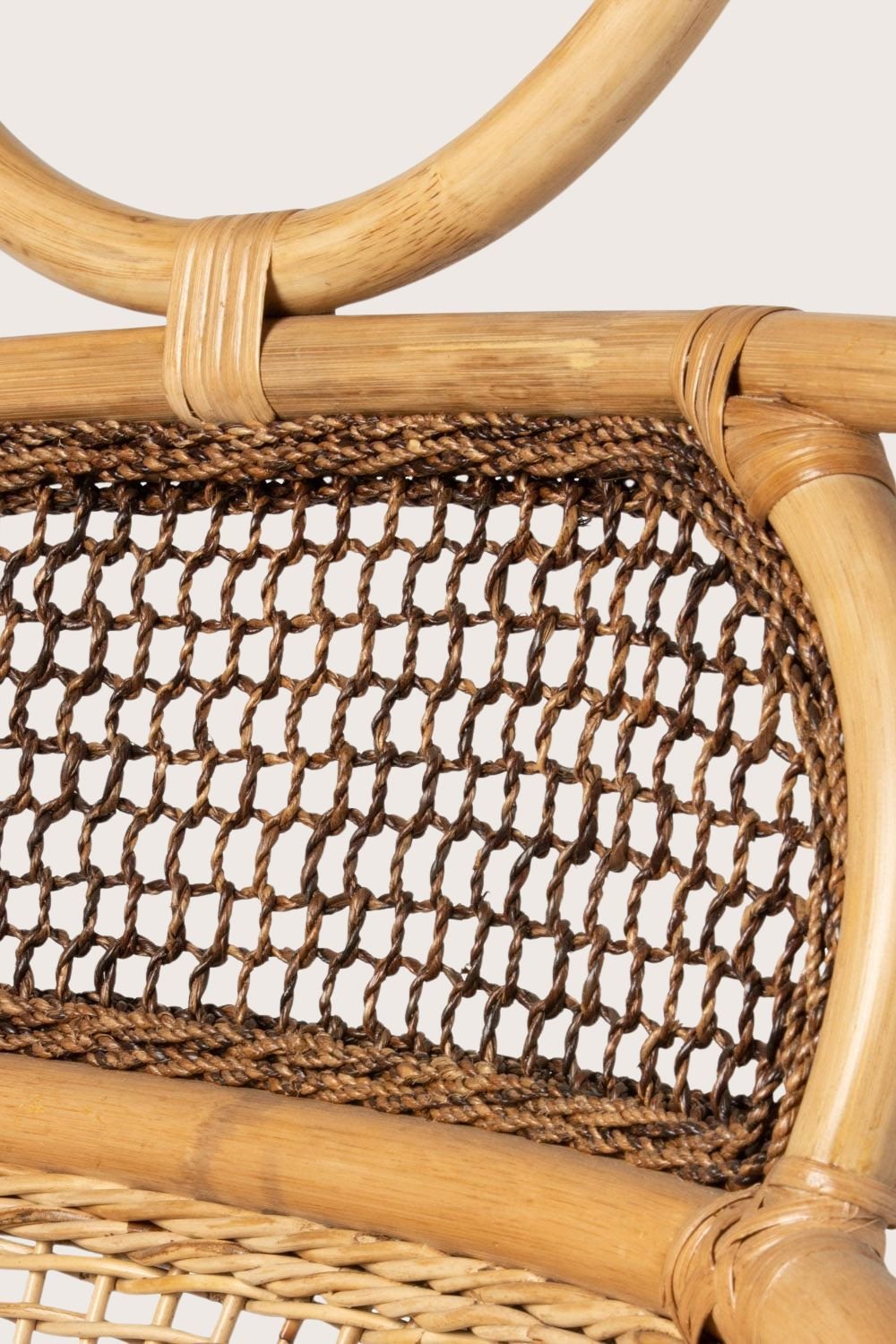 Image 8 of 8
Image 8 of 8









Isis Goddess Rattan Wingback Chair
Details
Make a statement in your living room with our Isis Goddess Rattan Wingback Chair. Designed to demand attention, this wingback chair perfectly blends natural materials, including rattan and bamboo. The multi-tiered bentwood design evokes both the wings and Hathoric, sun-disc crown with which the Egyptian goddess, Isis, is often associated. Crafted with a mesh back and cane seat, this chair is the ultimate "throne," which is both the basis for Isis' name, and the hieroglyphic symbol that represents her. With its mesmerizing design and graceful beauty, the Isis Goddess Rattan Wingback Chair is a touch of the divine feminine, fit for any room in your interior.
Editors' Note
This piece is named in honor of the Egyptian roots of woven furnishings. Ancient Egypt holds some of the world’s oldest examples of woven or wicker furniture. The Egyptians believed that the skill of weaving, along with that of baking and the brewing of beer were gifts from the goddess Isis, given while she was married to Osiris, then the earthly king of Egypt. Originally a minor figure in Egypt's religious pantheon at the start of its dynastic period, the cult of Isis would grow with time, eventually expanding beyond the boundaries of Egypt to be taken up by Greece and later Rome. Famously the wife and sister of Osiris and mother and protector of Horus and his children, Isis has varied, deep and multifaceted roles, representing motherhood, mourning, and protection among other things. As a main character in the story of Osiris' betrayal, ultimate death at the hands of his brother Seth, and ascension to become king of the dead, Isis and her sister Nephthys, who helped reanimate Osiris, played an important role in ancient funeral rites. Further, because Osiris had been king of Egypt before becoming king of the dead, and was succeeded on his earthly throne by his son Horus, all pharaohs identified with Horus in life, and became one with Osirus in death, and so were deeply connected with Isis as a divine earthly mother and wife in the afterlife. As she grew in importance, Isis took on roles and motifs associated with other goddesses. Perhaps most notably, as she became associated with the cow-goddess Hathor, she assumed the so-called, Hathoric crown, which consisted of the sun-disc held between the horns of a cow. Ostensibly a transfer that occurred as sculpted images of Isis nursing the young Horus became widespread, the Hathoric crown replaced Isis' original headdress, a throne, which was also the hieroglyphic representation of her name. Believed by some to presage later Christian images of Mary and Jesus, who are often represented in poses similar to those of Isis and Horus, such images spread with her cult to the farthest reaches of the mediterranean world. Temples to Isis have been found in such far flung locations as Nubia (Sudan), England and Afghanistan, as well as the Turkish city of Ephesus and Pompeii in Italy. As Egypt completed its transition to Christianity while under Roman rule, the temple of Isis at Philae stood one of the last vestiges of ancient Egyptian spirituality, remaining under the care of its priests until the 5th century AD.
Details
Make a statement in your living room with our Isis Goddess Rattan Wingback Chair. Designed to demand attention, this wingback chair perfectly blends natural materials, including rattan and bamboo. The multi-tiered bentwood design evokes both the wings and Hathoric, sun-disc crown with which the Egyptian goddess, Isis, is often associated. Crafted with a mesh back and cane seat, this chair is the ultimate "throne," which is both the basis for Isis' name, and the hieroglyphic symbol that represents her. With its mesmerizing design and graceful beauty, the Isis Goddess Rattan Wingback Chair is a touch of the divine feminine, fit for any room in your interior.
Editors' Note
This piece is named in honor of the Egyptian roots of woven furnishings. Ancient Egypt holds some of the world’s oldest examples of woven or wicker furniture. The Egyptians believed that the skill of weaving, along with that of baking and the brewing of beer were gifts from the goddess Isis, given while she was married to Osiris, then the earthly king of Egypt. Originally a minor figure in Egypt's religious pantheon at the start of its dynastic period, the cult of Isis would grow with time, eventually expanding beyond the boundaries of Egypt to be taken up by Greece and later Rome. Famously the wife and sister of Osiris and mother and protector of Horus and his children, Isis has varied, deep and multifaceted roles, representing motherhood, mourning, and protection among other things. As a main character in the story of Osiris' betrayal, ultimate death at the hands of his brother Seth, and ascension to become king of the dead, Isis and her sister Nephthys, who helped reanimate Osiris, played an important role in ancient funeral rites. Further, because Osiris had been king of Egypt before becoming king of the dead, and was succeeded on his earthly throne by his son Horus, all pharaohs identified with Horus in life, and became one with Osirus in death, and so were deeply connected with Isis as a divine earthly mother and wife in the afterlife. As she grew in importance, Isis took on roles and motifs associated with other goddesses. Perhaps most notably, as she became associated with the cow-goddess Hathor, she assumed the so-called, Hathoric crown, which consisted of the sun-disc held between the horns of a cow. Ostensibly a transfer that occurred as sculpted images of Isis nursing the young Horus became widespread, the Hathoric crown replaced Isis' original headdress, a throne, which was also the hieroglyphic representation of her name. Believed by some to presage later Christian images of Mary and Jesus, who are often represented in poses similar to those of Isis and Horus, such images spread with her cult to the farthest reaches of the mediterranean world. Temples to Isis have been found in such far flung locations as Nubia (Sudan), England and Afghanistan, as well as the Turkish city of Ephesus and Pompeii in Italy. As Egypt completed its transition to Christianity while under Roman rule, the temple of Isis at Philae stood one of the last vestiges of ancient Egyptian spirituality, remaining under the care of its priests until the 5th century AD.

Additional Details
Rattan chair
Material: Rattan/Bamboo
Size: 41"W x 31"D x 55"H
Seat Depth: 18.8”
Seat Height: 16.8”
Weight: 23lbs
Imported
Made to order
Ships to the continental US in 3-4 weeks
Care Instructions: Wipe up spills immediately to avoid warping or staining. Blot with a clean, damp cloth. Remove small surface debris with a soft brush. Avoid harsh chemicals or abrasive cleaners.




